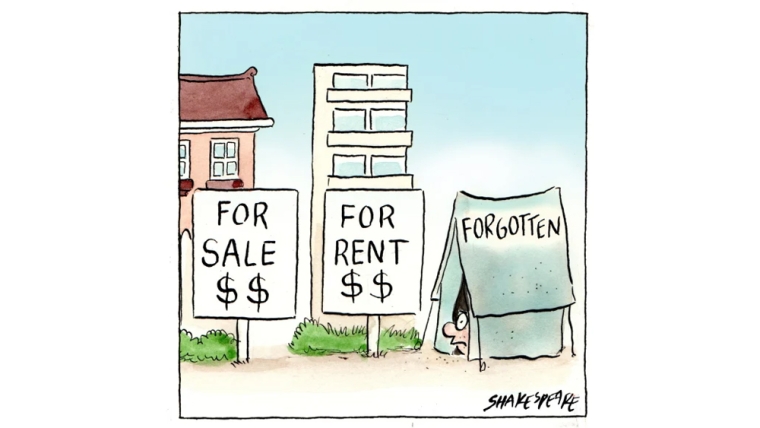
Australia’s Labor government is having a great year. Thanks to a serendipitous series of events, it went in just four months from what looked like a possible election defeat to a landslide win.
Those events included a hopeless election campaign by its Coalition opposition, a chaotic and unsettling first 100 days of the Trump presidency, and a cut in the cash rate by the Reserve Bank in February that led to lower mortgage rates.
This week the good news for the Labor government continued. Its Coalition opposition has split for the first time since 1987. In the face of major policy differences, the Nationals have decided to abandon their coalition with the Liberal Party. That leaves center-right politics in Australia in a state of disarray and increases the likelihood that Labor will win again at the next election.
On top of that the Reserve Bank has cut the cash rate for a second time this year, another 25 basis points to 3.85%. This move was in line with market expectations but will still be welcomed by the government. The four major lending banks quickly followed suit and announced mortgage rate reductions of the full 25 basis points. That can only be a plus for a government acutely aware of the direct link between mortgage rates and consumer confidence.
The latest move by the RBA needs to be seen in context. In the post-Covid period, the cash rate peaked in November 2023 at 4.35% where it stayed until February. That’s lower than many of Australia’s major trading partners. The reduction this year totaling 50 basis points also represents a less severe adjustment than those undertaken by many other comparable central banks.
The comments from the RBA’s Monetary Policy Board this week were consistent with that conservative approach. The emphasis was on two points – the current high level of economic uncertainty, both domestically and internationally, and the need for caution going forward.
Specific reference was made to US tariff policy and geopolitical tensions, and their unknown impact on global economic activity. According to the Policy Board, these are contributing to ‘a weaker outlook for growth, employment and inflation in Australia’.
On the upside, ‘private domestic demand appears to have been recovering, real household incomes have picked up and there has been an easing in some measures of financial stress’. The Policy Board expects unemployment to rise from its current 4.1% but only to around 4.3% over the next two years.
The latest figures for April showed that employment continues to grow. Indeed, there are labour shortages in parts of the economy.
Crucially for the Policy Board’s cash rate decision, inflation has fallen dramatically since peaking in 2022 and is continuing to ease. ‘Annual trimmed mean inflation’, a key indicator for the Policy Board, dropped below 3% for the first time since 2021, while headline inflation, at 2.4%, was within the bank’s 2-3% target band.
Inflation under control and unemployment peaking below 4.5%. That’s all good news for the government.
The immediate response of markets to the RBA’s announcement was a drop in the Australian dollar, a drop in the yield on three-year Australian bonds, and a small lift in Australian share prices.
In a nation obsessed by house prices, one of the big questions going forward is what impact the latest rate cut will have on the residential property market. This year’s 50-basis point reduction will translate into a material increase in the borrowing capacity of many would-be homeowners.
Falling interest rates, security of employment, and subdued inflation could be a recipe for increased buyer confidence. For the first time in several years, ‘fear of paying too much’ could be replaced by ‘fear of missing out’. Some commentators are heralding another property boom.
The government may not applaud that development. Substantial rises in both house prices and house rents post-Covid have already created an ‘affordability crisis’, particularly for younger Australians.
Last week’s edition of The Economist magazine highlighted this crisis using its ‘Carrie Bradshaw index’ – how much someone has to earn to live alone. (Carrie Bradshaw being a character from ‘Sex in the City’ who lived alone.) According to this index, Sydney, Brisbane, and Adelaide are all unaffordable because the median rent for a one-bedroom dwelling in these cities exceeds 30% of median income.
The Economist argues that ‘Australia’s housing stock lags behind other rich countries’ which is pushing up rents. The government will hope that lower interest rates will stimulate the construction of more new housing.
Where to from here for the RBA’s cash rate?
In her post-rate cut announcement press conference, RBA Governor Michele Bullock explained that the Policy Board considered a 50-basis point cut at its meeting but ‘it wasn’t the strongest argument in the room’. The fact that such a large cut was even considered will influence market expectations and pricing in the debt, share, and currency markets.
Australians will be hoping that the RBA can get the balance right, and that international events don’t derail the economy’s positive trajectory. As for the Labor government, it will be hoping that its run of good luck continues.
*Ross Stitt is a freelance writer with a PhD in political science. He is a New Zealander based in Sydney. His articles are part of our 'Understanding Australia' series.
2 Comments
Cheaper money for housing amid rate cuts will fuel demand and push up property prices
https://www.abc.net.au/news/2025-05-21/cheaper-money-for-housing-amid-r…
Ross, I understand that giving context is important, but dedicating the first 17 paragraphs to context and only the last 2 to the actual topic "Where to for interest rates from now on", is way out of kilter.

We welcome your comments below. If you are not already registered, please register to comment.
Remember we welcome robust, respectful and insightful debate. We don't welcome abusive or defamatory comments and will de-register those repeatedly making such comments. Our current comment policy is here.